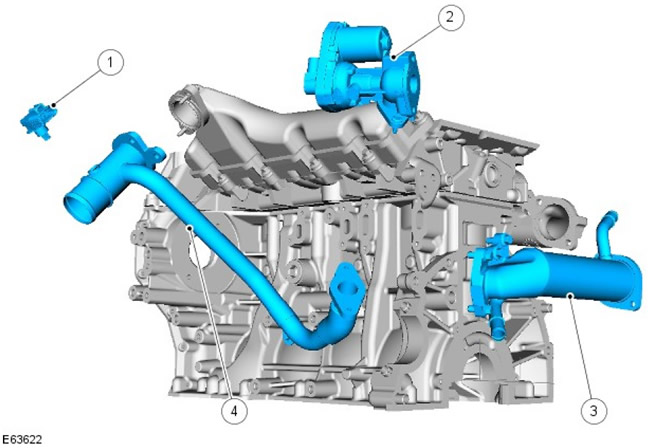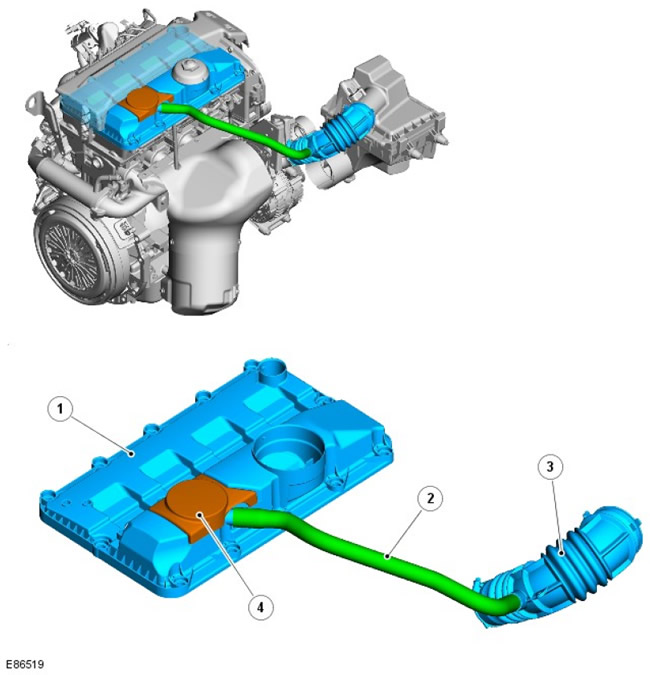Component Location Exhaust Gas Recirculation (EGR)

| Pos. | spare part no | Name |
| 1 | - | Sensor (shown for placement purposes only) absolute pressure in the intake manifold (MAP) |
| 2 | - | EGR valve |
| 3 | - | EGR heat exchanger |
| 4 | - | Gas transfer and mixing pipes |
Review
The EGR system includes the following components:
- EGR modulator
- EGR heat exchanger
- Gas transfer pipe and gas mixer
Exhaust gas enters the EGR heat exchanger directly from the exhaust pipe, where it is cooled by passing through a bundle of pipes with water integrated into the overall engine cooling system. An EGR valve is installed on the cold side of the heat exchanger. This valve is driven by an electric motor - it is controlled by the engine control unit (ECM), providing different amounts of EGR recirculation depending on the operation of the engine. When the engine is switched off, the valve opens and closes several times to free itself of deposits that may have accumulated on it during operation.
The EGR pipeline transports the cooled gas to the mixer, where the gas is mixed with the incoming air stream.
The ECM monitors the function of the EGR system and stores fault codes in the event of a malfunction. The EGR valve can also be activated for testing using the Land Rover approved diagnostic system.
Location of crankcase ventilation components

| Pos. | spare part no | Name |
| 1 | - | cylinder head cover |
| 2 | - | Gas transfer pipeline |
| 3 | - | Air inlet pipeline |
| 4 | - | Oil separator |
Review
The crankcase ventilation system regulates pressure build-up during engine operation. To prevent excessive loss or consumption of oil, the separator ensures that all gases leaving the crankcase during operation are separated from any oil particles.
Gas from the engine crankcase enters the oil separator block located under the engine cam cover due to the difference between the crankcase pressure and the pressure in the air intake pipe. The oil separator removes oil from crankcase gases. The crankcase pressure is vented to the air intake system through the crankcase vent line. The separated oil flows from the oil separator to the oil pan through the engine's internal oil passages.
Comments on this article